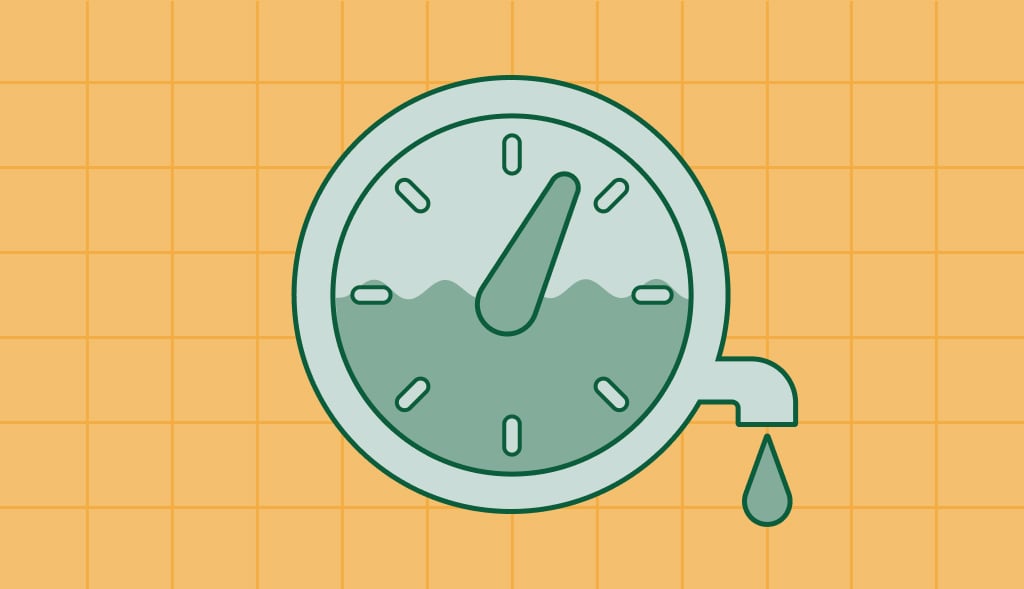How Long Does it Take to Drain a Water Heater? Do it Faster!

Cleaning and emptying your water heater is important for its proper functioning. It may not be the first thing you think of when taking care of your home, but it is necessary. Over time, minerals like calcium and magnesium build up inside the water heater tank, affecting its performance and longevity. In this article, we’ll outline how to drain your water heater and how long you can expect the process to take.
Why Drain and Flush Your Water Heater?
When your water heater warms up water, minerals in the water can separate and settle at the tank’s bottom. Draining and flushing the water heater removes this sediment, helping your appliance run more efficiently and prolong its useful life.
The Process: How to Drain Your Water Heater
Before we delve into how long it takes to drain a water heater, let’s walk through the steps involved.
- Turn off the water heater: If it’s gas-powered, turn the thermostat to the “pilot” setting. For electric models, switch off the appropriate circuit breaker.
- Turn off the cold water supply valve: This valve is usually located at the top of the water heater. Turning it off prevents more water from entering the tank while you’re trying to drain it.
- Open a hot water faucet: Choose a faucet in your home and turn on the hot water. This helps relieve pressure in the system and allows the water in the heater to drain more quickly.
- Connect a garden hose to the drain valve: The drain valve is located near the bottom of the water heater tank. Make sure the hose is in a suitable location, where you can safely dispose of hot water and sediment. It can be in the driveway or in a large bucket.
- Open the drain valve: Now it’s time to let the water flow. Be careful, as the water will be hot.
How Long Does it Take to Drain a Water Heater?
Now for the main question: how long does it take to drain the tank? Generally, it takes about 30 minutes to an hour to drain the average 50-gallon water heater completely. However, the time may vary depending on the size of the tank and the amount of sediment present.
After the water heater tank is empty, it’s time to flush it. To do this, turn the cold water supply valve on for about 15 minutes to stir up any remaining sediment. Then, with the hose still attached, open the drain valve again. Repeat this process until the water flows out clear from the hose.
Finally, close the drain valve, disconnect the garden hose, and refill the tank. Be sure to keep the hot water faucet open until water flows out steadily – this signals that the tank is full. Then, turn off the faucet and restart the water heater.
How to Drain Your Water Heater Faster
If you’re in a hurry and want to drain your water heater faster, there are a few strategies you can employ. Firstly, opening a hot water faucet in your home can help the tank drain more quickly. This step releases pressure in the system, allowing the water to flow out of the tank faster.
Secondly, consider using a larger diameter hose if available. A garden hose is typically used to drain a water heater. A wider hose allows more water to flow out at once, reducing the total time it takes to drain the tank.
It’s important to note that these strategies can speed up the process. However, they won’t reduce the amount of time it takes to thoroughly flush out the sediment from your tank.
This flushing is a crucial step in maintaining the efficiency and longevity of your water heater.
Changing the Valve for a Bigger One to Drain Faster
Another method to expedite the process of draining your water heater is by changing the drain valve to a larger one. Most water heaters come with a standard 3/4 inch drain valve. Replacing it with a full port 1-inch ball valve can significantly speed up the draining process. It will allow you to release a much larger volume of water.
Ensure that the water heater is completely cool and the pressure in the tank is fully relieved.
Conclusion
Draining and flushing your water heater is a relatively simple process. It’s an essential part of maintaining your appliance’s performance and longevity.
Although the process takes a bit of time, it can save you money in the long run. It will improve your heater’s efficiency and avoid potential repairs down the line.
Remember, if you’re uncomfortable performing this task at any time, it’s always best to hire a professional plumber. They will ensure the job is done safely and effectively.
DISCLAIMER: The information provided is for general DIY guidance on water heater maintenance and does not replace professional advice or service. Risks include electric shocks, burns, and property damage. Prioritize safety, follow manufacturer’s guidelines, and consult with professionals if unsure. Comply with local laws and obtain necessary permits. Use this information at your own risk; the provider assumes no liability for any injuries or damages. If in doubt, hire a professional.
Blog
Water Heater Recirculating Pump : Why And How Does It Work?
What is a Hot Water Recirculating Pump and How Does It Benefit Your Home? Every homeowner knows the inconvenience of waiting for hot water to […]
Troubleshooting: Why Your Hot Water Heater Is Not Working
When you want a warm bath or shower but only get cold water, it can be really annoying. If your hot water heater isn’t working, […]

